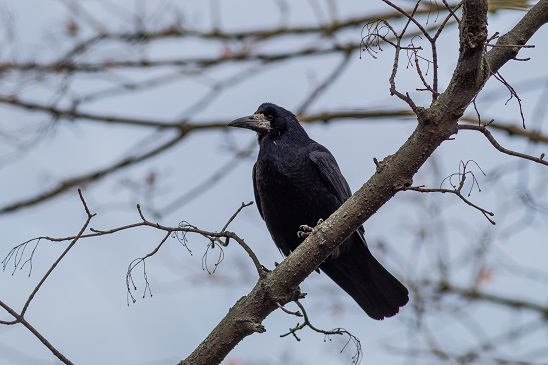Table of Contents
ToggleIntroduction
Regarding saltwater aquariums, enthusiasts often seek to create a vibrant and diverse underwater world. One of the most sought-after additions to such a setup is the mesmerizing Red Mandarin Goby (Synchiropus splendidus). These small, colorful fish add a unique charm to your aquarium, making it a true spectacle. In this article, we will explore the captivating world of Red Mandarin Gobies, from their appearance to their habitat, care, and more.
What is a Red Mandarin Goby?
Red Mandarin Gobies, also known as Mandarin Dragonets or Psychedelic Gobies, are native to the Pacific Ocean, particularly the Indo-Pacific region. They are part of the dragonet family known for their striking and vibrant appearance. These fish have captivated aquarists worldwide for their intricate and diverse colors.
Physical Characteristics
Size and Shape
Red Mandarin Gobies are relatively small, typically reaching a size of 2.5 to 4 inches. They have elongated bodies with a dorsal fin that extends along their back. Their bodies are flat and have a round shape, and they are characterized by a large head and a protruding mouth, which is adapted for feeding.
Coloration
What sets Red Mandarin Gobies apart is their exquisite coloration. They are adorned with a kaleidoscope of colors, including deep blues, bright oranges, and vibrant greens. Their body is covered in intricate patterns, making them resemble a work of art. These colors serve as a defense mechanism in the wild, warning potential predators of their toxicity.
Habitat and Distribution
Red Mandarin Gobies are found in the warm, tropical waters of the Pacific Ocean, including regions around the Philippines, Indonesia, and the Great Barrier Reef. They are commonly found in coral reefs and lagoons, where they seek refuge among the coral branches and rubble.
Behavior and Feeding Habits
These Gobies are known for their leisurely swimming and graceful movements. They are peaceful by nature, making them a great addition to a community aquarium. Red Mandarin Gobies are carnivorous and feed on small invertebrates, particularly copepods and amphipods. Their feeding behavior is intriguing, as they continuously forage for food.
Aquarium Care
Tank Size and Setup
To keep Red Mandarin Gobies happy and healthy, it’s crucial to provide them with an appropriate environment. A tank size of at least 30 gallons is recommended, as these fish require ample swimming space. They thrive in setups that mimic their natural habitat, with plenty of live rock and hiding places.
Water Conditions
Maintaining stable water conditions is essential for Red Mandarin Gobies. They are sensitive to changes in water quality, particularly fluctuations in temperature, pH, and salinity. Regular water testing and quality maintenance are critical to their well-being.
Compatibility with Other Fish
Red Mandarin Gobies are generally peaceful and can coexist with other non-aggressive fish species. However, they may need to fare better with larger, more aggressive tank mates, as they can become targets for bullying. It’s advisable to choose tank companions carefully.
Breeding Red Mandarin Gobies
Breeding Red Mandarin Gobies in captivity can be challenging due to their specific reproductive behavior. They are known for their intricate mating rituals, which typically involve a male courting a female with elaborate displays. Successful breeding often requires a well-established and mature aquarium with a stable population of copepods for the fry to feed on.
Common Health Issues
Red Mandarin Gobies are relatively hardy fish, but they are susceptible to common aquarium diseases, such as ich and fin rot. Regular observation and prompt treatment are essential to keep them healthy.
Tips for Keeping a Healthy Red Mandarin Goby
- Provide a varied diet rich in copepods, amphipods, and other small invertebrates.
- Maintain stable water conditions, particularly temperature, pH, and salinity.
- Create a calm and peaceful environment in your tank.
- Observe their behavior for any signs of distress or illness.
Where to Purchase a Red Mandarin Goby
Red Mandarin Gobies are often available in well-established aquarium stores and from reputable online suppliers. It’s essential to source them from ethical and sustainable sources to protect wild populations.
Conclusion
In saltwater aquariums, the Red Mandarin Goby shines as a jewel of color and beauty. Their captivating appearance and peaceful nature make them a prized addition to any reef aquarium. By providing the proper care and environment, you can enjoy the vibrant presence of these stunning fish in your underwater oasis.
FAQs
How long do Red Mandarin Gobies live?
- Red Mandarin Gobies can live up to 6-8 years with proper care.
Are they reef-safe?
- Yes, they are reef-safe and can be kept in reef aquariums without harming corals or other invertebrates.
Do Red Mandarin Gobies require a specialized diet?
- They thrive on a diet of copepods and amphipods, which are abundant in well-established reef tanks.
What are their breeding habits?
- Red Mandarin Gobies engage in intricate courtship displays during breeding, and successful breeding requires specific conditions.
Can I keep more than one Red Mandarin Goby in the same tank?
- While possible, it’s essential to ensure they have sufficient space and hiding spots to reduce aggression between them.





